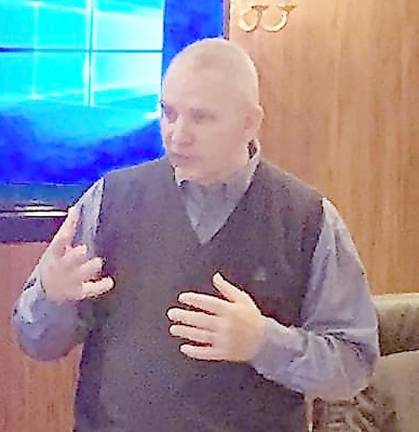Pike trains 18 to address dire EMT shortage
Milford. Emergency Management Director Tim Knapp said he was “very happy” with the result of the first class funded by the Greater Pike Foundation to fill an urgent need.

Pike County on Jan. 16 completed the first EMT training class using funds provided by the Greater Pike Community Foundation Initiative Fund, Emergency Management Director Tim Knapp reported on Jan. 20.
Knapp said 18 students finished the class out of the 25 that started the program. Three of the seven that didn’t finish couldn’t finish for medical and family reasons and intend to finish the aspects of the course they missed. He said he was “very happy” with that result.
Knapp said all 18 passed their practical exams and will soon move into the workforce.
“We all know the EMS workforce can really use it,” Knapp said.
The next class will begin on Feb. 22, and Knapp said it is already full and there is a waiting list for the third class.
Knapp said about 60 percent of the students in the first class took advantage of the Initiative Fund and he said about 90 percent are using it going forward. He said the average EMT class ranges from $1,200 to $1,800 and the classes had some kids between ages 16 and 18. He called the situation a “win-win” for everybody.
“That’s a lot of money to come up with,” Knapp said. “The Greater Pike and the EMS Foundation allows us to bring students into the class that wouldn’t be able to take the class or test out and become an EMT. It doesn’t matter if you’re a volunteer, or if you’re paid, we all have the same problem. If we had a billion dollars tomorrow to switch everybody to paid, we’d still have a shortage of EMTs. There’s just not enough EMTs to go around to do it.”
Commissioners Chairman Mathew Osterberg said some Pike County residents have stepped up and put a substantial amount of money in the Initiative Fund, which has helped people take the courses.
“If all of us put a little in there, we can continue the program, which is really beneficial, not only for the county, but for the greater good to see people get involved in these live-saving endeavors,” Osterberg said.
“We all have the same problem. If we had a billion dollars tomorrow to switch everybody to paid, we’d still have a shortage of EMTs. There’s just not enough EMTs to go around to do it.” Tim Knapp